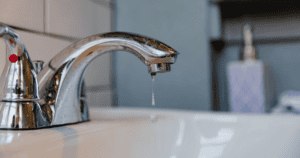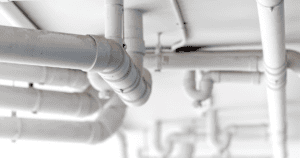Got Residential Plumbing Problems? Find Out When It’s Time to Call A Professional.
Residential plumbing is an essential part of any home, but it’s often taken for granted until something goes wrong. Homeowners frequently encounter a variety of plumbing issues, from minor leaks to major clogs. Understanding these common problems and knowing how to address them can save you time and money. In this blog, we’ll explore five common residential plumbing issues and provide some tips on how to resolve them yourself. However, remember that some problems are best left to professionals.
1. Dripping Faucets

A dripping faucet can be annoying and wasteful. The cause is often a worn-out washer or O-ring. Here’s a step-by-step guide to fixing it:
- Turn off the Water Supply: Locate the shut-off valve under the sink and turn it off.
- Disassemble the Faucet: Use a wrench to remove the handle and the packing nut. Depending on the type of faucet, you may need to unscrew additional parts.
- Replace the Washer or O-Ring: Inspect the washer or O-ring and replace them with new ones of the same size. Ensure you have the correct type of washer for your faucet.
- Reassemble the Faucet: Put all parts back together in reverse order. Make sure everything is tightened properly but not overly tight.
- Turn on the Water Supply: Test the faucet to ensure the dripping has stopped. If it still drips, check for other potential issues, such as damaged seals.
2. Low Water Pressure
Low water pressure can make daily tasks frustrating. It could be caused by a build-up of sediment in your pipes or a problem with your local water supply. Here’s how to address it:
- Check the Aerators: Unscrew the aerator on your faucet and clean out any sediment. You can soak the aerator in vinegar to dissolve mineral deposits.
- Inspect the Showerhead: Remove the showerhead and soak it in vinegar to dissolve any mineral deposits. Clean out any remaining debris with a brush.
- Check for Leaks: Inspect visible pipes for leaks which could be causing a drop in pressure. If you find a leak, patch it up with pipe tape or a pipe repair kit.
- Test Other Faucets: If low pressure is only at one faucet, the problem is localized. If it’s throughout the house, it might be a larger issue with your plumbing system or the local water supply. In such cases, contacting a plumber for a thorough inspection might be necessary.

3. Running Toilets
A running toilet can waste a lot of water. Here’s how to fix it:
- Check the Flapper Valve: Lift the tank lid and inspect the flapper valve. If it’s damaged or not sealing properly, replace it with a new one. Flapper valves are inexpensive and available at most hardware stores.
- Adjust the Float: Ensure the float is set at the correct level. If it’s too high or too low, it can cause the toilet to run continuously. Adjust it according to the manufacturer’s instructions.
- Check the Fill Tube: Ensure the fill tube is securely attached and correctly positioned above the overflow tube. If it’s disconnected or misaligned, it can cause the toilet to run.
4. Slow Draining Sink
A slow draining sink is often caused by a clog in the drain. Here’s how to fix it:
- Use a Plunger: Place a plunger over the drain and create a seal. Push and pull the plunger rapidly to dislodge the clog.
- Clean the P-Trap: If plunging doesn’t work, remove the P-trap under the sink. Place a bucket underneath to catch any water and unscrew the trap. Clean out any debris and reassemble it.
- Use a Drain Snake: If the clog is further down the drain, use a drain snake to reach and remove it. Insert the snake into the drain and turn the handle to break up the clog.
5. Leaky Pipes

Leaky pipes can cause significant damage if left untreated. Here’s how to fix minor leaks:
- Turn off the Water Supply: Locate the shut-off valve for the affected pipe and turn it off.
- Dry the Area: Ensure the area around the leak is dry. Use a cloth or towel to soak up any water.
- Apply Pipe Tape: Wrap pipe tape around the leak, overlapping each layer by about half the width of the tape. This will create a tight seal.
- Use a Pipe Repair Kit: For larger leaks, use a pipe repair kit. Follow the manufacturer’s instructions to apply the patch or clamp.
- Check for Additional Leaks: Once the repair is complete, turn the water supply back on and check for any other leaks. If the leak persists or there are additional issues, it might be necessary to call a professional plumber.
Conclusion
While many residential plumbing issues can be addressed with a bit of DIY effort, some problems require professional expertise. If you’re ever in doubt or if a problem persists despite your best efforts, it’s time to call in a professional plumber. Don’t hesitate to reach out to Steve Huff Plumbing for reliable and efficient plumbing services. We’re here to help ensure your home’s plumbing system runs smoothly and efficiently.